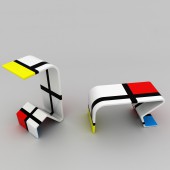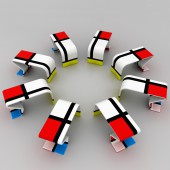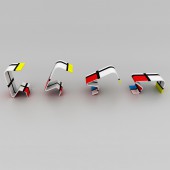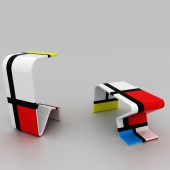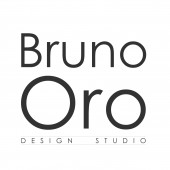Piet Stool, Center Table by Bruno Oro |
Home > |
 |
|
||||
| DESIGN DETAILS | |||||
| DESIGN NAME: Piet PRIMARY FUNCTION: Stool, Center Table INSPIRATION: The main source of inspiration for this project was the Bauhaus school and its proposal of using clean but functional lines on products. A secondary source of inspiration that have a strong link with Bauhaus school was also applied, the Stijl movement, where Mondrian as used as main reference. The mix of this two aspects applied into design offers a good harmony between art and technicality. UNIQUE PROPERTIES / PROJECT DESCRIPTION: As sustainability increases to be relevant in our lives, and residential spaces downsize accordingly, we foresee most of the population living in small spaces in the near future. This concept of sustainable living speaks of responsible consumerism and people enjoying –having- only what is necessary in terms of furniture, electronics, food, clothes and also space. We move forward to a culture where things want to fulfill basic needs by reaching high efficiency in their use: products should not only address mass consumption but also be conscious of the ecosystem, money, and quality of life. Having this in mind, the Piet Stool/Table was created as a multifunctional product, allowing the consumer to use it either as a stool or a center table, ideal for small environments that need smart spatial organization. The product brings with it more than just functionality, and was designed combining two important moments of design: The characteristics of one famous name of The Stjl, Piet Mondrian, who made abstraction and clean lines paramount of his work, and the recognized school of design, The Bauhaus that contributed to the understanding of Design as a wholesome discipline. Both concepts are embedded in Piet Stool/Center Table in it’s desire to serve with clean lines to multipurpose spaces. OPERATION / FLOW / INTERACTION: The product can be either used as a stool for half-sit position or just simply rotated to become a center table. These characteristics allows the product to be use in small spaces or multi-functional environments that require a different interaction. PROJECT DURATION AND LOCATION: The product was conceived in 2009 in Curitiba (Brazil), few prototypes were exposed in design shops in the city as a way to promote the design. FITS BEST INTO CATEGORY: Furniture Design |
PRODUCTION / REALIZATION TECHNOLOGY: Materials: Vinylester, glass and aramid reinforcement and polyurethane foam core Manufacturing Process: Wet lay-up SPECIFICATIONS / TECHNICAL PROPERTIES: Width 400 mm X 400 mm Depth X Height 800 mm TAGS: piet, bauhaus, mondrian, stool, table, product, design, multi-functional, interior, furniture RESEARCH ABSTRACT: This project started through an analysis of United Nations report on how people's behavior and space will change in 2050. In 2010 the global urban population is predicted to be 3.5billion by 2050 it is expected that this will be 6.4billion people (74% of the world population) Source: UN The majority of urbanisation until 2025 will likely be concentrated to the developing world. The number of urban dwellers in the developing world will increase by 50.5% between 2007 & 2025 Megacities have 10m+ inhabitants in 2007 there were 19 Megacities. By 2025 it is predicted there will be 27 Megacities (Asia = 16, Africa =3, Europe = 2, North America = 2, Latin America = 4) The world’s largest city by 2025 is expected to be Tokyo with 36m inhabitants. If, as now predicted, the global pop. grows to 9bn+ by 2050 and if we want to leave a buffer for the preservation of biodiversity, we need to find ways for the average person to live well on less that half the current > global average footprint. Worldwide 30-40% of all primary energy is taken up by buildings (source UNEP). As an example of the need to change way of life in the city to create a sustainable future, people living in Stockholm, Sweden need to decrease their energy consumption by 60% between 2000 & 2050 (Source: Mattias Höijer, Royal Institute of Technology in Stockholm) Considering this report, the project was designed to offer practicality and interaction in small spaces. CHALLENGE: Design a multi-functional product that could adapt itself in small environments and offer the user practicality and interaction. ADDED DATE: 2015-01-16 05:23:50 TEAM MEMBERS (1) : Bruno Oro de Abreu IMAGE CREDITS: Bruno Oro de Abreu |
||||
| Visit the following page to learn more: http://www.brunooro.com.br | |||||
| AWARD DETAILS | |
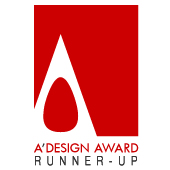 |
Piet Stool, Center Table by Bruno Oro is Runner-up for A' Design Award in Furniture Design Category, 2014 - 2015.· Press Members: Login or Register to request an exclusive interview with Bruno Oro. · Click here to register inorder to view the profile and other works by Bruno Oro. |
| SOCIAL |
| + Add to Likes / Favorites | Send to My Email | Comment | Testimonials |

